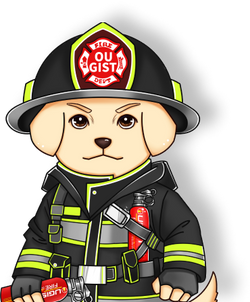When it comes to managing fire emergencies, having a clear understanding of fire levels is crucial for effective response and decision-making. Fire emergencies are often classified into different levels based on their severity, potential impact, and required resources. In this blog post, we'll delve into the various fire emergency levels and what they entail.

Level 1: Minor Incidents At this level, fires are small in scale and can be easily contained and controlled with minimal resources. They typically pose no immediate threat to life or property. Level 1 incidents might include small brush fires, controlled burns, or small-scale indoor fires that can be extinguished swiftly.

Level 2: Moderate Incidents A Level 2 fire emergency indicates a moderately challenging situation that requires a more significant response effort. These incidents might involve larger wildfires, industrial fires, or structural fires that have the potential to spread if not managed promptly. Additional firefighting resources and coordination may be necessary.
Level 3: Major Incidents A Level 3 fire emergency signifies a significant and potentially dangerous situation. These incidents often involve large-scale wildfires, industrial accidents, or structural fires that pose a threat to populated areas or critical infrastructure. Extensive firefighting resources, strategic planning, and cooperation between multiple agencies are required to bring the situation under control.

Level 4: Catastrophic Incidents Catastrophic fire emergencies are the most severe and demand an all-hands-on-deck approach. These incidents have the potential to cause widespread destruction, loss of life, and extensive environmental damage. Examples include massive wildfires that impact multiple communities or complex urban fires that challenge firefighting capabilities. Responding to Level 4 incidents requires a unified effort from various agencies, often including national or international assistance.

Response Strategies: Each fire emergency level requires specific response strategies and coordination among firefighting agencies, emergency services, and community members.
-
Early Detection and Prevention: Swift detection of fires and proactive prevention measures play a crucial role in managing fire emergencies at all levels. Advanced technologies like satellite monitoring, weather forecasts, and fire danger ratings aid in early detection.
-
Resource Allocation: Based on the fire level, allocating the right resources becomes vital. This includes firefighting personnel, equipment, aircraft, and specialized teams. Adequate resources must be deployed to match the severity of the incident.
-
Evacuation and Sheltering: In cases of higher-level fire emergencies, timely evacuation plans and sheltering strategies are critical to safeguarding lives. Communities must be educated on evacuation routes, assembly points, and emergency communication methods.
-
Mutual Aid and Collaboration: As fire emergencies escalate in severity, collaboration between local, regional, and even national agencies becomes paramount. Mutual aid agreements ensure that additional resources can be quickly mobilized to support overwhelmed areas.
-
Public Awareness and Preparedness: Raising public awareness about fire safety and preparedness is essential. Regular drills, education campaigns, and community involvement can help individuals and families understand how to respond effectively to different fire emergency levels.


